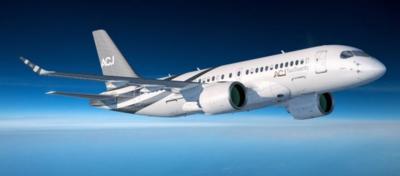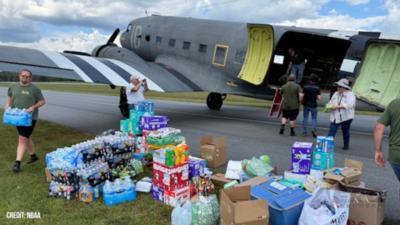Wed, Oct 23, 2024
ACJ Expects the Sector to Contribute $33 Billion More Within Five Years
A recent study led by Airbus Corporate Jets (ACJ) revealed that the US business aviation (BA) industry is expected to generate $182.8 billion by 2029. This is almost $33 billion more than the current economic contribution of $150 billion.

The US is home to over 5,000 public airfields, though less than 500 support commercial airline operations. This makes business aviation a necessary service for connecting passengers nationwide, and its role is only expected to continue growing.
The ACJ study interviewed industry financers and brokers. 85% believed that business aviation will become more crucial within the next five years, and 83% stated that the sector will be vital for emergency response and humanitarian relief missions. This is not hard to believe after seeing how quickly business aviators jumped into action following Hurricanes Helene and Milton.
Other ACJ research, involving senior executives of mega BA corporations, noted that 64% of those interviewed would be willing to use their aircraft for philanthropic services. Out of the 36% who responded negatively, 25% stated that they did not have enough aircraft and 22% blamed a lack of internal management for this type of operation. The other half intends to reconsider this application in the coming three years.

“The wider positive benefits from the business aviation sector are often overlooked,” expressed ACJ President Chadi Saade. “The sector not only supports organizations in their growth plans by enabling them to more easily reach destinations and facilitate important meetings, it also supports many local communities that are not serviced by commercial airlines, creating thousands of jobs from engineers to catering staff to pilots.”
200 Airbus corporate jets are currently in service. The latest ACJ project is its TwoTwenty: ‘The Xtra Large Bizjet.’ It features a cabin twice the size of other ultra-long-range (ULR) aircraft in the same price range. ACJ claims that the jet will produce the same parking footprint and can take off from the same airports while reducing operating costs by 33%. It is capable of flying on a 50% kerosene and sustainable aviation fuel (SAF) blend, though Airbus hopes to switch to 100% SAF fuel for its entire fleet by 2030.
More News
Airplane Bounced About 3 Ft Then Touched Back Down And Then, With No Brakes Applied, The Airplane Began Veering To The Left Analysis: The pilot entered the airport traffic pattern >[...]
Aero Linx: British Microlight Aircraft Association (BMAA) The primary focus within all aviation activity is SAFETY. In all aspects of our sport SAFETY must come first, whether it b>[...]
From SnF25 (YouTube Edition): William Wynne Builds Practical Aircraft Engines on the Corvair Platform Seeking an affordable alternative to the traditional aircraft engine options, >[...]
How To Get A Story On Aero-TV News/Feature Programming How do I submit a story idea or lead to Aero-TV? If you would like to submit a story idea or lead, please contact Jim Campbel>[...]
From 2023 (YouTube Edition): Bridge of CiES CiES Inc. is a Bend, Oregon-based designer and manufacturer of modular embedded aircraft systems and sensors. The company’s fuel-l>[...]
 NTSB Final Report: Aviat A1
NTSB Final Report: Aviat A1 ANN's Daily Aero-Linx (07.08.25)
ANN's Daily Aero-Linx (07.08.25) Classic Aero-TV: Fly Corvairs Reliable Engine Alternative
Classic Aero-TV: Fly Corvairs Reliable Engine Alternative ANN FAQ: Contributing To Aero-TV
ANN FAQ: Contributing To Aero-TV Classic Aero-TV: CiES Fuel-Quantity and e-Throttle Systems Praised
Classic Aero-TV: CiES Fuel-Quantity and e-Throttle Systems Praised




